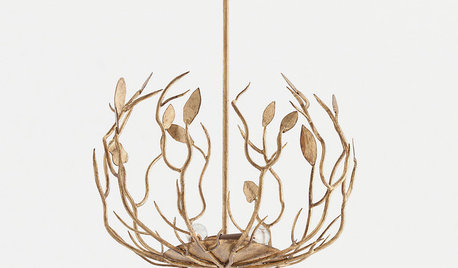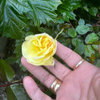tiny, sooty dots EVERYWHERE
bebba1
10 years ago
Related Stories

DECORATING GUIDESCandy Adds a Sweet Design Touch
From peppermint stripes to gumball dots, these designs will make you feel like a kid in a candy store
Full Story
KITCHEN DESIGNHouzz Call: Tell Us About Your First Kitchen
Great or godforsaken? Ragtag or refined? We want to hear about your younger self’s cooking space
Full Story
MOVING9 Ways to Calm New-Home Jitters
Buyer's remorse begone! Here are some tricks to help you warm to your new place, warts and all
Full Story
FUN HOUZZIn Praise of Silliness
These 16 distinctive spaces are seriously fun. See if any encourage your inner child to break free
Full Story
HOUZZ TOURSHouzz Tour: Just-Right Realism in an Eclectic Family Home
With 1,100 square feet, a modest budget and 2 young children, a San Francisco family embraces a creative DIY approach
Full Story
LIFEHow Do You Make Your Tea and Coffee in the Morning?
A morning cup is a must for many, and preparation comes in many guises. We look at coffee and tea habits across the Houzz community
Full Story
PRODUCT PICKSGuest Picks: An Enchanted Forest Bedroom
Live out a fairy tale with heirloom-quality bedroom furniture, natural accessories and a sprinkle of gilt
Full Story
LIGHTINGEasy Sparkle: String Lights for Christmas and All Year
Enjoy the merry look of twinkling lights over desk, closet, shelf, mirror or table
Full Story
REMODELING GUIDESFinish Your Remodel Right: 10 Tasks to Check Off
Nail down these key details to ensure that everything works properly and you’re all set for the future
Full Story
DECORATING GUIDES1970s Style Finds Groove Today
The bright colors and unmistakable patterns of the '70s are swinging back into homes, but with modern flair for today's interior designs
Full Story






Poorbutroserich Susan Nashville
Maryl (Okla. Zone 7a)
Related Professionals
Wrentham Landscape Architects & Landscape Designers · Elwood Landscape Architects & Landscape Designers · Ferndale Landscape Architects & Landscape Designers · Brooklyn Center Landscape Architects & Landscape Designers · Salem Landscape Contractors · Woburn Landscape Contractors · Bridgeview Landscape Contractors · Canton Landscape Contractors · Fridley Landscape Contractors · Haverhill Landscape Contractors · Oakland Landscape Contractors · Setauket-East Setauket Landscape Contractors · Vashon Landscape Contractors · Wayland Landscape Contractors · Kingsburg Landscape Contractorsjerijen
roseseek
bebba1Original Author
bebba1Original Author
roseseek
michaelg